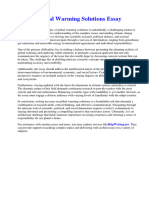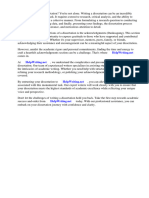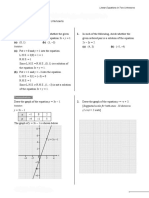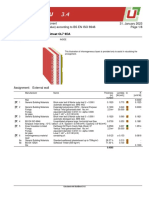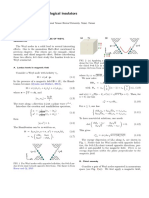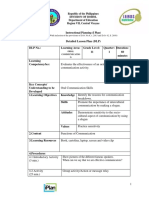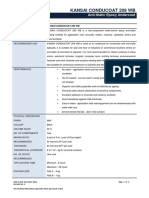Writing a dissertation is a challenging task that requires a significant amount of time, effort, and
dedication. It is a comprehensive research project that demonstrates a student's ability to conduct
independent research and contribute to their field of study. However, many students find it difficult
to write a dissertation due to various reasons such as lack of time, lack of research skills, or difficulty
in organizing their thoughts and ideas.
If you are struggling with writing your dissertation, you may want to consider seeking help from a
professional writing service such as ⇒ HelpWriting.net ⇔. ⇒ HelpWriting.net ⇔ is a reputable
and reliable writing service that specializes in providing high-quality dissertations and other academic
papers. Their team of experienced writers can help you with all aspects of the dissertation writing
process, from choosing a topic to conducting research and writing the final draft.
By ordering your dissertation from ⇒ HelpWriting.net ⇔, you can save yourself time and stress
and ensure that you submit a high-quality paper that meets the requirements of your program. Their
writers are experts in their respective fields and have years of experience in academic writing. They
can help you with any aspect of the dissertation writing process, including:
Choosing a topic: If you are struggling to come up with a topic for your dissertation, their writers can
help you brainstorm ideas and choose a topic that is relevant and interesting.
Conducting research: Research is a crucial part of the dissertation writing process, and their writers
can help you find and analyze relevant sources to support your arguments.
Writing the dissertation: Writing a dissertation requires excellent writing skills, and their writers can
help you write a clear, concise, and well-organized paper that meets the requirements of your
program.
Editing and proofreading: Even the best writers make mistakes, and their writers can help you edit
and proofread your dissertation to ensure that it is free of errors and meets the highest academic
standards.
Ordering a dissertation from ⇒ HelpWriting.net ⇔ is easy and convenient. Simply fill out the order
form on their website, provide them with the details of your assignment, and they will assign a
writer to work on your paper. You can communicate with your writer throughout the writing process
and request revisions if necessary. Once your paper is complete, you can download it from their
website and submit it to your program for grading.
Overall, writing a dissertation is a challenging task, but with the help of a professional writing
service like ⇒ HelpWriting.net ⇔, you can ensure that you submit a high-quality paper that meets
the requirements of your program. Their team of experienced writers can help you with all aspects of
the dissertation writing process, from choosing a topic to conducting research and writing the final
draft. So if you are struggling with your dissertation, don't hesitate to seek help from ⇒
HelpWriting.net ⇔.
�Pat Clarke was also found to be a regular contributor on these forums, presenting guidance on a
number of elements associated with the suspension and steering system design. Page 59. Building on
this, Longhurst (2011) mentions that oversteer is where the car loses grip at the rear wheels causing
the car to turn more than expected by the driver whereas understeer induces the opposite of this
behaviour. IRJET- Lightweight and Multi Material Designing and Analysis of a C9 Bus. On top of
this, each component’s material and anticipated manufacturing process is detailed. 8.2 Modelling
Process As the geometry was fully defined for the steering and suspension systems, modelling of the
components that made up these systems could ensue. Minimization of Casting Defects in Aluminum
Alloys Wheels through Manufacturi. This effect is highly undesired as it raises the centre of gravity
and places the suspension linkage in the droop position which results in poor tyre camber, in effect,
hindering the tyre’s adhesion to the track surface. However, this would provide a more optimised
solution and so if further work Page 105. Casper, WY USA, viewed 10 October 2011,. Page 151. A
string length was used to derive the behaviour of the roll centre. 6. Springs Allan suggests the
springs or coils for the car should be selected by analysing the required coil rate, the leverage on it,
and the sprung weight of the car that will rest on them. These main factors should be the desired
performance and handling characteristics of the vehicle, the overall size of the vehicle and thus
ability to navigate through tight track sections, and lastly, how everything is to be packaged on the
car. These have included using properties from past USQ vehicles where needed in design
calculations and most importantly, documenting the design process, decisions and solutions
thoroughly in the dissertation in hope that future students will be able to better understand the
suspension and steering design procedure but to also improve the ease with which they are able to
interpret the findings of the project in order to apply them to a future vehicle. After experiencing the
wealth of knowledge and guidance from colleagues, I realized that association management was a
great fit for me, I just needed the tools to progress. As previously mentioned, the spherical bearings
will be placed in the suspension arms to support the uprights. This keeps the tyres of the vehicle as
flat to the road surface as possible. Front Uprights For the front arrangement, the sizing of the
upright was defined by the desired scrub radius and kingpin inclination. The red ovals represent the
driver’s feet in their approximate position on the accelerator pedal (silver colour) and the brake pedal
(black). Upload Read for free FAQ and support Language (EN) Sign in Skip carousel Carousel
Previous Carousel Next What is Scribd. In particular he mentions to “Beware of bellcranks with
aggressive multiplication ratios as these make the car very sensitive to minor adjustments.” While not
as influential on the vehicle’s performance as the two previous preliminary decisions, the choice of
whether to use the same shock absorbers on the front and rear would also affect the way the car
behaved. Although the design process used to obtain the above listed design parameters was quite
extensive it is believed that the final suspension actuation system is not a fully optimal solution.
Chassis, chassis frame, FSAE, Finite element analysis, FEA, stresses, CATIA. You bet it does!” The
amount of Ackermann employed in the steering system is defined by the geometry of the steering
arm on the upright. This was due to the fact that the people conversing on the various forum topics
were basically in the same shoes as the author where students competing in the competition spoke on
behalf of experience and true FSAE design background while staff and FSAE technical advisors
provided thorough information due to their close association with these student team members and
monitoring of design. Teams Enable groups of users to work together to streamline your digital
publishing. Essentially, it is a 3 dimensional balance point where if the car was suspended by, it
would be able to balance with no rotational movement. The subject of this report, the design of a
spring, Damper and Anti-roll bar system, lies within. Using a larger ratio would mean that vehicle
movement would be less sensitive to driver input and would also Figure 7.2: Determining front
wheel steer angles that produce no scrub on the tightest turn on an FSAE track. Page 121. Now the
simulation is made to run the Radioss Solver. However, thorough assessment of the car’s dynamic
performance was obviously unachievable as the design couldn’t be physically tested. As a guideline,
W. and D. Milliken (1995, p716), state that the steering ratio for race cars typically ranges from 20:1
to 10:1 while a vast majority opinions expressed on the FSAE.com forums indicated that the steering
�ratios employed in an FSAE vehicle generally ranged from around 4:1 up to around 10:1. In selecting
a model a very detailed and extensive analysis could have be carried out as there are so many types,
manufacturers and models of shock absorbers that are applicable to an FSAE vehicle.
�The design and analysis of the UGO M15A Chassis frame was conducted with a. Adding to this,
Smith also mentions the importance of using a considerably wider front track than on the rear and
that the lower the cornering speed, the greater the importance of this. It is also expected that all
accelerative forces experienced by a vehicle will act through its centre of gravity. There is 0%
difference between the structural torsional stiffness of both scenarios. Ideally the angle that the push
rod makes with the rocker rotation axis should be perpendicular whereas in figure C.2 it can be seen
that this angle is significantly less than 90 degrees and thus all forces do not act normal to the
rocker’s axis of rotation. Page 63. Further refinement of these positions by specifying exact locations
of the shock absorbers represented the first step in the technical design of the suspension actuation
mechanisms. Without these placements the design of the rockers and push rods was unable to occur.
This keeps the tyres of the vehicle as flat to the road surface as possible. Figure 3.3 Wishbone linked
anti-roll bar (Car Bibles, 2015). The relation of all these parameters can be observed over the page on
figure 2.2 (Smith, 1978, p30) Figure 2.1: Determination of roll centre and moment arm. (Smith,
1978, p30) Page 27. This analysis uncovered a large number of issues with the vehicle that all could
have potentially contributed to the 2008 vehicle’s crash. However, it is important to mention that this
should be a significant consideration for future USQ FSAE design. For an FSAE vehicle it is
believed that less wheel travel is better as this permits a lower ride height and thus centre of gravity
height also. Pitman Arm Out of the two above mentioned configurations, the Pitman arm is the lesser
used for a number of reasons. For the overall criteria weighting I have chosen 1, this is because
weight will have an almost. To warrant that the final design is easy to drive and inspires confidence
though, a number of measures have been taken throughout the design process. The main
consideration here was the packaging because the upright has to accommodate both the pickup
points for the suspension arms but also the pickup point for the toe link, a rod that attaches to the
chassis and upright alongside the suspension arm mounts in order to provide toe angle adjustment.
Essentially these components are separate parts but Staniforth reinforces that they are very closely
inter-related and thus can be designed in one step. While striving to achieve these major aims, project
work will focus on a number of basic objectives. This sketch was the starting point for each iteration
and defined the percentage of Ackermann employed along with the steering arm length. It can also
be seen that these wheel rates do not dramatically increase through the shock absorbers compression
and this is also good. While doing this, the packaging, simplicity, accessibility and applicability of
the design were again taken on board. Additionally, the toe link mount is rearward of this suspension
arm pickup point and both these lower points extend off the centre of the upright the same distance.
The total roll moment of the vehicle (Wx total), is the sum of the roll moment of the sprung. The
reason for this choice was that it offered the best. The project complied with all of the templates and
envelopes required by the FSAE 2015 rules. Another key source of information uncovered in the
project’s literature review was the FSAE.com forums. Although the information supplied on these
forums was not quite as official as the sources listed earlier because it was predominately provided
by students and staff associated with universities participating in the FSAE competition, the ideas
and opinions expressed were extremely useful and applicable to the project design. This meant that
the design’s wheel travel could be the same or very close to, the minimum value specified in the rules,
which as Page 102. If future work was going to be carried out and the design was going to be
physically produced, it would be useful to verify the stiffness’s derived above with some of these
types of calculations in order to achieve an optimal solution. Page 110. In the rear, a push rod
configuration also suits quite well as with the shock absorbers up higher, associated linkages and
components have clearance from the drive train and engine. With the upright specified, movement of
these pickup points is the only way to define the static location of the roll centre height and therefore
if these points cannot be moved around much than neither can the roll centre meaning that the
geometry obtained will not be optimal.
�The following table summarises the costs associated with the parts designed for the suspension and
steering system. Further explaining this phenomenon, Crahan (2004, p169) mentions that the tyres of
a car that is being driven will experience a large degree of deformation by external and internal
loads, and that the suspensions system is responsible for compensating for these deformations and
loads in order to maximize tyre adhesion which is expected to provide improved handling
performance. Page 24. This converted rotation swings the Pitman arm side to side depending on the
given steering input. In the rear, a push rod configuration also suits quite well as with the shock
absorbers up higher, associated linkages and components have clearance from the drive train and
engine. The consequence of this design is that operation of the suspension is not smooth because the
dampers do not see the full force exerted by the movement of the wheel due to friction in the bell
cranks or rockers and the fact that pivots in the mechanism experience forces that do not act normal
to their axis of rotation. Manitou Shock Spring 2011, online product listing, Chain Reaction Cycles
Ltd. However, if the rear axle is to be driven suitable consideration will need to be made to ensure
this driving axle is flexible so to allow for the suspension movement. Completion of the geometry
design for the suspension and steering system found that iteration is key to arriving at an optimal
solution as there are no straightforward equations or processes regarding the formulation of this
geometry. Test the new motion ratio for required spring rate using natural frequency method 5. It’s
helpful to be able to learn from others that have the same difficulties and experiences as you. Keizer
also provides a wide range of wheels within this FSAE model range, allowing the designer to choose
from a wide selection of offsets, materials and designs. Also, the broken line represents half of the
rack and pinion length, Page 124. Drexel University 2003 Formula SAE Team’s Design Approach
Although brief, the method outlined in a sample proposal document for the 2003 Drexel University
Formula SAE team (2003) demonstrates a structured plan towards the design of the suspension
system for their car. If they were to be built it is expected they’d be made from mild steel
rectangular and square hollow sections as well as plate, with the circular bearing housing at the
centre of the upright, cast and machined or simply machined. The information uncovered has
provided a decent knowledge basis and starting point for design to commence. For this iteration
process, preliminary decisions related to the vehicles handling, methodology, result evaluation criteria
and results are all discussed. When selecting shock absorber locations, the design’s packaging,
simplicity, accessibility, and applicability to a typical USQ vehicle were all considered. The 2008
vehicle was attempted to be repaired of the damage suffered from its crash at the 2008 FSAE
competition although due to a lack of support and time delays on the manufacture of replacement
suspension and steering components, the vehicle was not completed on time Page 145. The full
compatibility of the geometry and component design was also not completed as an assembly able to
be manipulated in order to simulate typical vehicle operation would be required and this wasn’t
available due to a lack of time. Page 146. Figure 8.1 Front spring, damper and anti-roll system final
design. This project deals with the Analysis of Roll Cage for the Formula Student Car. To verify if
the calculated motion ratios agreed with the chosen spring stiffness’s, the natural frequency coil rate
calculations were repeated although using the updated motion ratio. Like the 2008 vehicle, one
particular issue with this design could be controlling the geometry when the parts are welded. It
should also be acknowledged that the calculations applied in the actuation mechanism design, as
mentioned by W. and D. Milliken (1995, p601), present a simplified way of solving for the spring
weight. Centre of Gravity (CG) The definition of centre of gravity for a car is no different than that
of a simple object such as a cube. In this instance though, the parameters modified were the caster,
trail and camber. The material for the model is defined in the material card. Fortinet Server
Authentication Extension Version 4.0 Administration Guide. Student. The following chapter explains
the function of a suspension system. Other Data All other data required to form the first iteration’s
geometry came from decisions made earlier on in the design process or from information provided
by manufacturers of the components chosen to be incorporated in the design.
�IRJET Journal High Cycle Fatigue Life Estimation of Automotive Chassis Under the Dynamic Lo.
Although this simplified the model quite a bit, it is believed that these 3 vehicle behaviours were
sufficient in order to evaluate the performance of each iteration. Figure 6: KONI 2612 Damper
standard top eye (right) extended top eye (left). After experiencing the wealth of knowledge and
guidance from colleagues, I realized that association management was a great fit for me, I just
needed the tools to progress. Knowing the height of the rack, the appropriate rack length required
could be calculated. This was based off prices for this type of hardware in the 2008 vehicle cost
report and typical prices found on the internet. 9.2.5 Grip Once again this is another criterion that
could not be fully evaluated without physical testing of the design. Cars with aggressive caster
angles are self-adjusting with regard to corner weights. The following list outlines the initial
performance targets for the project’s design with the targets in bold regarded as the most crucial
aims. It should be recognised that all targets are listed in order of importance. Page 72. Early Tech
Adoption: Foolish or Pragmatic? - 17th ISACA South Florida WOW Con. The above drawing,
Figure B5, shows the longitudinal distances between the centre of mass and the front and rear of the
race car, this will be. Now that a decision has been made for the arrangement of the spring and
damper system. Another term that is often associated with the caster angle is the caster offset or
mechanical trail which is also seen on figure 2.14. (Bastow Et al, 2004, p11) Toe Angle Toe angle is
the angle that a wheel makes with a line drawn parallel to the length of the car, when viewed from
above. All models have been created and assembled in SolidWorks and there are no detail drawings
available due to the limited completeness of the models. These main factors should be the desired
performance and handling characteristics of the vehicle, the overall size of the vehicle and thus
ability to navigate through tight track sections, and lastly, how everything is to be packaged on the
car. If this rack and pinion were to be created, it is believed that the housing of the gears would be
made from machined aluminium alloy, the rack and pinion gears would be bought complete if
possible while the brackets to secure the tie rod ends would be made from either machined or bent
aluminium alloy plate. 8.7 Bearings and Fasteners The only bearings and fasteners considered in the
design were the THK SB-12 spherical bearing and the Alinabal AM-5-GP rod end. In the static
events of the FSAE competition, competitor’s vehicles are tested on a tilt table that is stated to
emulate 1.7g’s of cornering force to test if the car will keep all wheels on the ground (SAE
International, 2010, p45). This location will be influenced by the need to protect and avoid the
driver’s legs and to avoid significant amounts of bump steer. The main difference between a thesis
and a dissertation is the degree type they are submitted for. Teams are allowed to couple their engine
setup to any transmission and drivetrain. 1.3.3 Suspension Requirements As quoted from the 2011
FSAE rule book: B6.1.1 The car must be equipped with a fully operational suspension system with
shock absorbers, front and rear, with usable wheel travel of at least 50.8 mm (2 inches), 25.4 mm (1
inch) jounce and 25.4 mm (1 inch) rebound, with driver seated. The Material that is to be used for the
chassis is chosen to be 4130 alloy steel extrusion becauseofitsrelativelyhigherstrengthand. The
relation of all these parameters can be observed over the page on figure 2.2 (Smith, 1978, p30) Figure
2.1: Determination of roll centre and moment arm. (Smith, 1978, p30) Page 27. Results of 2nd Set of
Iteration The aim of the second set of iterations was to identify some patterns in the geometry to find
out what geometry characteristics contributed positively to the evaluation criteria listed above. These
values are expected to provide ease of steering while still providing enough feel for the driver. 4.5
Chapter Summary In this chapter the proposed design plan formulated based on information
uncovered in the literature review and what was believed most appropriate to a USQ FSAE team,
along with the founding design decisions that would shape the final suspension and steering system,
have been discussed. Also, the black arrows indicate the positive directions of the x, y and z axes
and the coordinate points listed over the page are in the form (x, y, z) with dimensions shown in
millimetres. Apart from these component-specific allowances there have also been a couple of other
procedures incorporated throughout the project to better the design’s flexibility. This is important as
the 2011 FSAE competition rules (2010, p38) state that the vehicle’s cockpit must complete a test
whereby a template representing the minimum space required in the corridor where the driver’s legs
�are be placed, is passed along the length of the cockpit and if the template is unable to travel this
path than the team will not be permitted to compete in any of the dynamic events. This was achieved
by inputting dimensions in the top left of the Wingeo3 program window. To warrant that the final
design is easy to drive and inspires confidence though, a number of measures have been taken
throughout the design process. Here it is seen that as the wheel moves up, the shock absorber is
compressed thus reducing the effect of forces induced by the ground surface that are felt by the
chassis. Engine and Drivetrain Requirements A piston engine using a four stroke primary heat cycle
with displacement not exceeding 610cc is required.
�The proposed methodology tackles the design challenge
throughthreemajorphases;theyareshapeofchassis,orientationofbrace. Dive and Squat: Dive and squat
are fundamentally the same concept except reversed. Size of the components can have an impact on
such things as aerodynamics, by reducing the. If the minimum travel (jounce or rebound) allowed by
the competition is unable to be achieved than calculate the motion ratio needed for this to occur 4.
Directly associated with the suspension arms, tie rods, toe links and push rods is the end plug which
is also featured over the page in figure 8.5. This plug is intended to be inserted in the ends of the
CHS tube before being welded in place. These targets aim to found a design that will produce
improved performance on the 2008 vehicle but also to yield a design that does not stretch a typical
USQ team to great lengths in order to create and build it. 4.4 Founding Design Decisions 4.4.1 Type
of Suspension The chosen suspension configuration used for both the front and rear of the vehicle
will be a double wishbone setup using unequal and non-parallel arms with inboard shock absorber
placement which uses push rods. Student. The following chapter explains the function of a
suspension system. The down sides to this design include that the mechanism cannot be used on cars
where vertical room is deprived due to significant height of the strut, it generally cannot be applied
to body on frame type vehicles as the strut requires a strong mounting point, and finally, the fact that
the wheels do not gain camber as the suspension actuates, reduces the handling capability of the
vehicle. (Severson, 2009) Figure 2.9: Typical MacPherson strut suspension layout. (Longhurst, 2011)
Page 37. This was one of Allan’s creations and essentially consisted of a full scale model of an
unequal, non-parallel double wishbone configuration which fully simulated the suspension
movement of the car. The diameters of the coil and gauge of the wire seen above in Figure 7 are
slightly smaller. Manufacture and install prototype into Formula SAE-A racer and evaluate. 8. Test
and obtain feedback from drivers and modify designs as needed. Page 15. Diversity and Inclusion
includes, but is not limited to, age, gender, race, religion, ethnicity, disability, appearance, sexual
orientation, gender identity, personality type and geographic location. Dive is where the front end of
the dips down under braking due to the longitudinal weight transfer from the back of the car to the
front acting on the front springs. These have included using properties from past USQ vehicles
where needed in design calculations and most importantly, documenting the design process,
decisions and solutions thoroughly in the dissertation in hope that future students will be able to
better understand the suspension and steering design procedure but to also improve the ease with
which they are able to interpret the findings of the project in order to apply them to a future vehicle.
It was chosen as the superior option because it best suits the steering range required to make the
tightest turn on the autocross track and also has an appropriate steering ratio. This figure has been
plotted in Matlab using tabulated data exported from Wingeo3. -3.5 -3 -2.5 -2 -1.5 -1 -0.5 0 0.5 1 -4
-3 -2 -1 0 1 2 3 4 Angl e of Cam ber - Rig ht W heel (deg rees ) Angle of roll (degrees) Right
Camber vs Chassis Roll Front Rear Page 96. Exhaust header design 4-1 equal length Fuel System
(manf'r) Fuel injection, sequential (Adaptronic ECU) Fuel System Sensors (used in fuel mapping)
MAP, MAT,TPS, Water Temp. The evaluation procedure, assessment criteria and review of iteration
results was elected completed with guidance from information uncovered in the literature review but
also took debate and opinions expressed on the FSAE.com forums into consideration. 5.3.1 Initial
Decisions Camber For each geometry the static camber remained the same such that a viable
comparison could be made between each option. The geometry allows the outer front wheel to cover
a larger radius than the inside wheel. Note: The table detailing these results in full is contained in
appendix D (table D.2). Using these findings a refined geometry that would provide optimised
dimensions both in terms of performance as well as applicability to a USQ vehicle was defined.
Figure 8.1 Front spring, damper and anti-roll system final design. On top of this, the costs listed for
the components that are manufactured is only a representation of material price which does not
include manufacturing costs of these components. Using a larger ratio would mean that vehicle
movement would be less sensitive to driver input and would also Figure 7.2: Determining front
wheel steer angles that produce no scrub on the tightest turn on an FSAE track. Page 121. The driver
must be able to operate the quick disconnect while in the normal driving position with gloves on.
�B6.5.5 The steering wheel must have a continuous perimeter that is near circular or near oval, i.e. the
outer perimeter profile can have some straight sections, but no concave sections. “H”, “Figure 8”, or
cutout wheels are not allowed. B6.5.6 In any angular position, the top of the steering wheel must be
no higher than the top- most surface of the Front Hoop. Overall the project has been very successful
and as a group have achieved a lot of the goals. This needed to be large enough to ensure the
steering ratio did not become too low, meaning that the car would be hard to drive over long periods
but also small enough so that the driver could make it round the tightest turns on the track without
running out of space in the cockpit or getting their arms tangled up trying to get the steering wheel to
full lock. However, this would provide a more optimised solution and so if further work Page 105.
The decisions considered include the type of suspension mechanism used, tyres and wheels, and
lastly, early geometrical decisions involving nomination of the wheelbase and track widths as well as
the kingpin inclination and scrub radius. Page 68. There is one minor disadvantage to the system, the
complexity of the design. With the. Presentation fortinet securing the cloud Presentation fortinet
securing the cloud xKinAnx Fortigate Training Fortigate Training NCS Computech Ltd.
�There was also a wheel provided by Watanabe which is an Australian Page 77. With reference to this
table, the highlighted green row represents the chosen design geometry. With the upright specified,
movement of these pickup points is the only way to define the static location of the roll centre height
and therefore if these points cannot be moved around much than neither can the roll centre meaning
that the geometry obtained will not be optimal. Manufacture and install prototype into Formula
SAE-A racer and evaluate. 8. Test and obtain feedback from drivers and modify designs as needed.
Each of these designs has a number of slight variations in order to tailor it to the various applications
in which they are used. The extr emiti es o f m ovem ent a re n ot a s hi gh a s the pre viou s ite ratio
n th ough. The biggest of these contributors was postulated to be the large scrub radius associated
with the cheap wheels fitted on the vehicle as well as the suboptimal steering design. Chapter 7
considers the steering geometry by which the location, general size and required ratio of the steering
rack and pinion is defined. Also, the broken line represents half of the rack and pinion length, Page
124. Formula Society of Automotive Engineers (FSAE) is an annual competition instituted by
Society of Automotive Engineers(SAE)to. Design, analysis and development of special purpose
machine to carry heavy lo. A Review on the Progress and Challenges of Aluminum-Based Metal
Matrix Compos. It should be noted that where components are sourced rather than manufactured
such as the wheels and shock absorbers, prices indicated do not include postage. This finding can be
confirmed by observing the following figure which compares the wheel space available in the old
wheels (Superlite 13” x 5.5”) to the new wheels selected for the design (Keizer 4L 13” x 7”). A
working drawing of the dimensions listed in Figure 9.2 can be seen. Firstly, it was necessary to find
out how far the left and right wheels needed to be steered in order to produce no scrub on the
tightest corner on an FSAE competition track. Page 120. Unfortunately this was not achieved as
although the car was repaired and able to rest on all four wheels, the repaired components were not
completed to a standard where physical testing on the vehicle could occur. With reference back to
the elected evaluation criteria, the final geometry can be justified as the optimal solution for a USQ
FSAE vehicle. These components are fairly simple and feature mostly square edges and profiles. Slip
Angle Slip angle is the angle made by the direction of the tyre contact patch with the direction of
overall velocity of vehicle. Currently there are four types of spring commonly utilised in cars which
are the coil, leaf, torsion bar and air springs. This was one of Allan’s creations and essentially
consisted of a full scale model of an unequal, non-parallel double wishbone configuration which
fully simulated the suspension movement of the car. The material used for the bar is plain carbon
steel. However, this would provide a more optimised solution and so if further work Page 105.
According to Smith (1978, p62), when designing around bump steer, large amounts of toe out
occurring due to the suspension movement should be avoided at all costs. It is also expected that all
accelerative forces experienced by a vehicle will act through its centre of gravity. Unlocking the
Power of ChatGPT and AI in Testing - A Real-World Look, present. These plugs will facilitate the
rod ends which are required to provide angular rotation of the suspension and steering components
and so will feature threads on the inner hole. Design, analysis and development of special purpose
machine to carry heavy lo. Based on the location of the instantaneous centre, the vehicle centreline
and the.
�The system functions using the rotational movement of the rocker. Fortinet Server Authentication
Extension Version 4.0 Administration Guide. While doing this, the packaging, simplicity,
accessibility and applicability of the design were again taken on board. Although, all these parts
were modelled, the design of each component is only at a concept stage. The new design intends to
use a 13inch wheel mainly because this size would present the good packaging which in turn would
simplify the suspension and steering design processes and for a beginning designer this is desired.
For this reason it is supported that the steering rack and pinion should be the last thing designed in
the steering system which would probably mean that the steering rack would need to be physically
designed from scratch to achieve the specific ratio required. After testing each geometry setup using
this process, the results obtained needed to be assessed. As observed there is no equations that
consider the effects of the vehicle experiencing a bump or rounding a banked turn. To arrive at an
optimal solution iteration was used, where the amount of Ackermann and length of the steering arm
were modified. A fast initial decision also had to be made by the group. This finding can be
confirmed by observing the following figure which compares the wheel space available in the old
wheels (Superlite 13” x 5.5”) to the new wheels selected for the design (Keizer 4L 13” x 7”). Test
the sag of the suspension with the chosen spring rate and1:1 motion ratio 3. But the place to do it is
packaging existing parts and technology.” Building on this, he then goes on to mention that, “If you
have a system from last year's car that works and works well, use it again. Given the typically low
speeds reached in the FSAE competition, this last disadvantage was not a major consideration. The
biggest of these contributors was postulated to be the large scrub radius associated with the cheap
wheels fitted on the vehicle as well as the suboptimal steering design. Kingdom by the Institute of
Mechanical Engineers (IMechE), who have hosted the European. However, they do typically come
with a couple of disadvantages being that the damping and adjustment is not optimised for a
motorised vehicle, let alone an FSAE car. An experienced designer will commonly design these
components with the geometry desired and then simply manufacture the parts before carrying on
with the rest of design whereas an amateur is more likely to create parts with flexibility down the
track in mind by making components easily adjustable and simple to physically modify. 5. Geometry
Further design of the suspension system is unable to proceed without the identification of the
suspension linkages’ pickup points, lengths and angles. The factor of safety of UGO M15A chassis is
more than one for all scenarios. In an article presented primarily for teams entering the FSAE
competition for the first time, Alan Gruner (2011) makes some very useful recommendations with
respect to keeping the design as simple as possible. Directly associated with the suspension arms, tie
rods, toe links and push rods is the end plug which is also featured over the page in figure 8.5. This
plug is intended to be inserted in the ends of the CHS tube before being welded in place. Test the
new motion ratio for required spring rate using natural frequency method 5. This document, the
associated hardware, software, drawings, and other material set out in the associated appendices
should not be used for any other purpose: if they are so used, it is entirely at the risk of the user. This
principle is best demonstrated by observing figure 2.17 below which also highlights the lateral forces
imposed on the wheel as it corners. Engine and Drivetrain Requirements A piston engine using a
four stroke primary heat cycle with displacement not exceeding 610cc is required. As this design
along with all previous USQ vehicles, Page 86. The data, methods and concepts used within the
report aren’t just specific to a race car, they. These main factors should be the desired performance
and handling characteristics of the vehicle, the overall size of the vehicle and thus ability to navigate
through tight track sections, and lastly, how everything is to be packaged on the car. In summary,
these benefits include simplified design procedures and calculations, better design packaging
qualities and potentially easier maintenance and repair procedures as not only would the systems be
easier to access, it is likely that as the parts are simple, the repair and maintenance procedures
required to fix them would also be simple in nature. This is based off material uncovered in the
literature review.




























